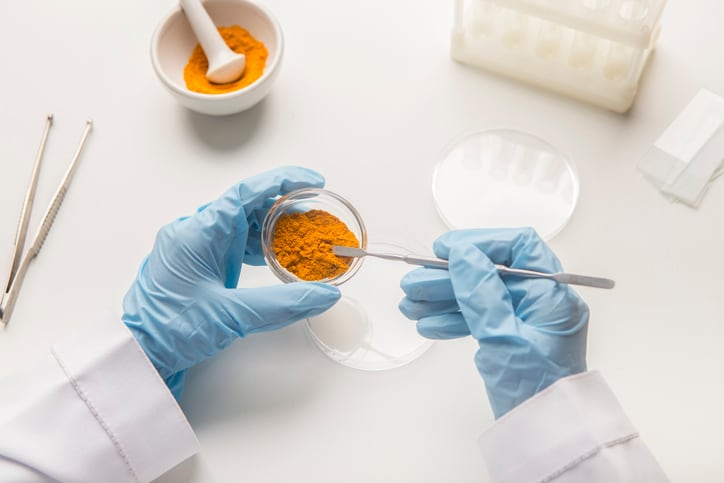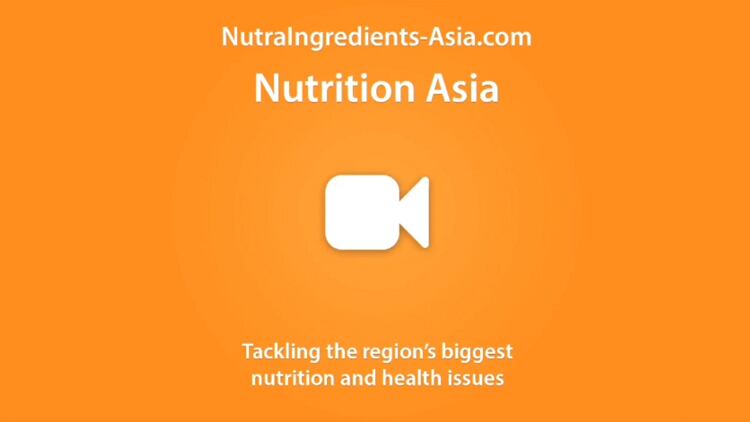Curcumin is the functional ingredient in turmeric, reported for its anti-inflammatory and antioxidant properties. Turmeric has applications across nutraceuticals, food flavourings, colourings and even cosmetics.
As demand for naturally derived turmeric increases globally, it has resulted in pressure on the supply, which in turn leads to adulteration with other curcumin species, dyes, and even synthetically produced curcumin.
Dr Lal Hingorani, managing director at Pharmanza Herbal told NutraIngredients-Asia: “Due to turmeric’s high demand in international trade, turmeric powder and extracts have been subject to deliberate, economically motivated adulteration,
“It has been reported that turmeric sold in the spice market is adulterated with low-quality botanical ingredients such as starch, cassava, and synthetic dyes such as metanil yellow and lead chromate.
“In turmeric extracts standardised to curcuminoids (active compound in turmeric), the most prominent adulteration is to mix with synthetically produced curcumin with a natural curcuminoid extract.”
This study was conducted by researchers at Pharmanza Herbal Pvt Ltd, a supplier of herbal and ayurvedic formulations in India, and the findings were published in the Journal of Pharmaceutical and Biomedical Analysis.
Safety concerns
Currently, clinical studies and health benefits on curcuminoids were done on natural origin curcumin compounds. According to Hingorani, synthetic curcumin is a single curcumin molecule that cannot be synergistically associated with natural curcuminoid’s research and health benefits.
In terms of labelling, Hingorani stressed: “If finished products contain synthetic curcumin, proper disclosure of this ingredient should be listed as ‘synthetic’ on the nutritional panel; labelling as a product of natural origin is deceitful in the least.”
In addition, the safety of synthetic curcumin is unknown.
Hingorani said the use of synthetic curcumin in formulations has potential regulatory concerns. The drafted guidelines in August 2016 by the US Food and Drug Administration (FDA) on new dietary ingredients highlighted that synthetically identical herbs or botanicals are not the same and therefore do not qualify as a dietary ingredient under 201(ff)(1)(C) of the Federal Food, Drug, and Cosmetic Act.
Rapid method
There are currently methods used to identify synthetic dyes in curcumin, and only one other method assessing the authentication of synthetic origin curcumin.
Hingorani pointed out that an existing but reliable method called Carbon-14 (C14) analysis can detect adulteration of synthetic curcumin in turmeric extracts, although its use is limited. “It requires specialised equipment that is generally not available in quality control laboratories.”
The researchers thus developed a high-performance liquid chromatography equipped with photodiode array detector (HPLC-PDA), a rapid method to help identify and quantify synthetic curcumin adulteration in turmeric extracts.
Hingorani explained the method differentiates turmeric extracts and synthetic curcumin by targeting CIMP-1 [(1E,4Z)-5-hydroxy-1-(4-hydroxy-3-methoxyphenyl) hexa-1,4-dien-3-one], which is a synthetic curcumin intermediate formed during the synthesis of synthetic curcumin. This is then confirmed by other analytical tools such as HPLC, HPTLC, and MS/MS.
Researchers also reported that boron was a qualitative indicator of synthetic curcumin through ICP-MS analysis. Boron was detected in more than 250mg/kg in three different batches from two different vendors across geographical areas.
Boron is formed during the chemical synthesis of curcumin, involving acetylacetone with a boric anhydride in the presence of ethyl acetate, and is a potential contaminant.
Researchers wrote: “These analytical investigations with validated HPLC-PDA methodology can be a useful tool for the researchers and industry to mitigate the risk of adulteration in the supply chain.”
This HPLC-PDA method can thus be applied to check the purity and adulteration of synthetic curcumin in natural turmeric raw material, extracts and related products.
Source: Journal of Pharmaceutical and Biomedical Analysis, Elsevier
https://doi.org/10.1016/j.jpba.2020.113603
“Assessment of Curcuma longa extract for adulteration with synthetic curcumin by analytical investigations”
Authors: Aboli Girme, et al.




